Збірка конспектів уроків з англійської мови до теми "їжа"
підбірка складається із шести конспектів уроків до теми "Їжа". Усі конспекти між собою логічно поєднані і становлять єдиний циклю Рекомендовано для використання на уроках англійської мови як перша іноземна у сьомому класі та як друга іноземна - у девятому класі, а також для гурткових чи факультативних занять
Міністерство освіти і науки України
Управління освіти, молоді та спорту Корецької РДА
Щекичинська ЗШ І-ІІ ступенів
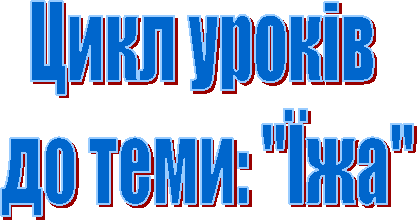

Підготувала: вчитель англійської мови
Штогун О.О.
Щекічин 2017
Тема: продукти харчування.
Мета:
активізувати лексико-граматичні навички усного мовлення з теми, практикувати учнів в читанні зі значним обсягом інформації за короткий проміжок часу;
формувати соціокультурну компетенцію, вчити працювати з довідковою літературою, інтернет-ресурсами;
розвивати слухову, зорову пам'ять, логічне та творче мислення, мовну, мовленнєву та прагматичну компетенцію;
виховувати культурні смаки, та культуру здорового харчування учнів.
Тип уроку: Урок вдосконалення мовленнєвих навичок і вмінь
Обладнання: ІКТ, тексти для читання, аудіо записи, картки із завданнями
Procedure
I. Beginning of the lesson
1. Introduction. Greeting
T. Good morning! Nice to see you. How is it going with you today? I hope you are well, P1?!
P1. Yes, sure. I am fine.
T. And what about you, P2?
P2. I am all right.
T. Are you in high spirit, P3?
P3. Of course, I am. I have a nice mood.
T. Any problems, P4?
P4. No problems. Everything is OK.
T. I am glad to hear you are fine. Are you ready to start our lesson?
Ps. Yes, we are.
2. Warming-up
T. Our today’s topic is “ Food”. The main task is to demonstrate how magic and mysterious the world of known and unknown food is. Brainstorm why people eat?
(На дошці зображення схеми)
|
|
|
for keeping energy |
|
|
|
|
|
↑ |
|
|
|
for pleasure |
← |
People eat |
→ |
to live |
|
|
|
↓ |
|
|
|
|
|
from force of habit |
|
|
T. Explain in 2 or 3 sentences what is mean by each of these points.
P1. (for pleasure): Tastes differ. People really have different tastes. But some of them eat too much food. It’s bad.
P2. (for keeping energy): People need proteins, fats and carbohydrates, because they give us energy.
P3. (to live): We cannot live without food. Because it regulates body functions. But eating isn’t the main thing in our life.
P4. (from force of habit): If people eat from force of habit they become fatter.
T. What is the main point?
P. People eat to live.
T. Right you are! So the motto of the lesson is “Live not to eat but eat to live” (девіз з’являється на дошці). At the end of the lesson we’ll be able to distinguish healthy food from unhealthy one.
II. The main part
1. Vocabulary practice
a) Revise your vocabulary to the topic food. Look, listen and repeat them. (відео фрагмент)
b) T. Guess the words by their descriptions:
(Учні озвучують загадки, які підготували заздалегідь. Решта повинні їх відгадати.)
- a desire for food, a discomfort caused by a need for food, starvation (hunger);
- a room or place for cooking (kitchen);
- one who eats no meat (vegetarian), etc.
2. Grammar play.
T.Let’s play! P1, be my helping hand!
As you know all nouns divide into two groups: countable and uncountable. Countable nouns are things that you can count and they have a singular and plural form. Uncountable nouns are things that you can’t count and they have only
a singular form.
There is so much food in our shop. Help me please to do shopping.
I have two bags and you must put things from shop shelves into correct bag.
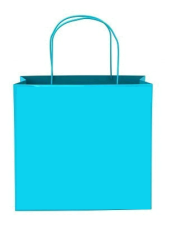
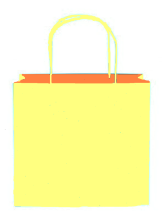
![]()
![]()
![]()
![]()
![]()
![]()
![]()
![]()
![]()
![]()
![]()
![]()
![]()
![]()
![]()
![]()
![]()
![]()
Thanks for your help!
3. Work in pairs
a) The students decide whether these foods come from an animal or plant origin. If it comes from an animal, they decide if the animal lives on the land or in the water. And after that the students put the words into the correct boxes.
Crab, chocolate, kebabs, hamburger, chicken, salmon, apple pie, orange juice, pears, peas, lamb, steak, chips, lemonade, strawberries.
|
plant origin |
|
animal origin (land) |
|
animal origin (sea) |
|
|
|
|
|
|
b) The teacher asks the students to make a list of 5 different items of food and read it out. The other students must say:
— if they are good for us or not;
— why;
— how much we should or shouldn’t eat.
Example:
Fruit. Fruit is very good for us. It contains vitamins. We should eat a lot.
Biscuits. Biscuits are not very good for us. They are made with sugar. We shouldn’t eat too many.
4. Reading
Text for Reading
American food is what immigrants bring to the country from all over the world. They say Americans live on hamburgers, hot-dogs, chips and coca-colas. Fast food is very popular in the USA.
Breakfast meal can vary from cereal and milk to eggs and pancakes or French toast (slices of bread dipped in an egg and milk batter and fried).
Lunch tends to be a lighter meal — a sandwich, yogurt, or a light entrée. Dinner includes a main course of meat, poultry or fish, accompanied by soup, salad and vegetables.
Brunch, a common Sunday meal served between 10.00 a.m. and 2.00 p.m., is really a combination of breakfast and lunch. There is a wide variety of foods, depending on which type of restaurant you go to. Some American-style restaurants have a typical menu.
Soups are French onion, chicken, vegetable and soup of the day. Salads are regular.
Main courses are steak, fried chicken, fish, hamburgers, pasta and pizza.
Hot and cold sandwiches are combinations of ham, turkey, roast beef, chicken, tuna or egg salads etc. served between two slices of bread.
Beverages are coffee, tea, soft drinks, mineral water and iced tea.
Desserts are cakes, ice-cream, frozen yogurt, fruit etc.
Americans eat out often. Fast food restaurants-have wide popularity. There are two types of restaurants in the USA, fast food and full-service restaurants. The style of fast food restaurant is much like that of cafeteria. Patron go up to a counter to order their meal: hamburgers, hot chicken sandwiches, and pizza. In full-service restaurants a waiter comes to take patron’s order. To express satisfaction with service patrons will give a tip of 20% of the bill.
True or false
- They say Germans live on hamburgers, hot-dogs, chips and coca-colas.
- Fast food is very popular in the UK.
- Lunch tends to be a lighter meal — a sandwich, yogurt, or a light entrée.
- The second courses are steak, fried chicken, fish, hamburgers, pasta and pizza.
- Desserts are cakes, ice-cream, frozen yogurt, fruit etc.
- There are two types of restaurants in the USA, fast food and full-service restaurants.
5. Speech skills
1. Say what would you like to buy
I’d like…
- bread
- 2 bottles of wine
- 200 g cheese
- 12 eggs
- biscuits
- chocolate
- 2 kg pears
2. Watch please video “At grocery store” analyze it and make up similar dialogues.
6. Word games
Find 15 words on the topic „Food and drinks“ in the box of letters given below.
|
v |
e |
g |
e |
t |
a |
b |
l |
e |
s |
|
a |
c |
m |
d |
s |
a |
l |
a |
d |
t |
|
e |
j |
a |
c |
o |
f |
f |
e |
e |
e |
|
m |
u |
s |
h |
r |
o |
o |
m |
s |
a |
|
b |
i |
h |
i |
f |
i |
s |
h |
s |
k |
|
i |
c |
e |
c |
r |
e |
a |
m |
e |
f |
|
m |
e |
d |
k |
u |
g |
p |
i |
r |
h |
|
v |
t |
k |
e |
i |
l |
p |
l |
t |
j |
|
u |
x |
a |
n |
t |
q |
l |
k |
o |
r |
|
p |
l |
u |
m |
y |
n |
e |
s |
w |
p |
III. End of the lesson
Summing-up
Today we’ve worked very well. All were very active, but somebody can be better, so, I give you such marks……
Home task
Write 10-12 sentences about your meal during the day.
Appendix
Pupil’s card
3. The students decide whether these foods come from an animal or plant origin. If it comes from an animal, they decide if the animal lives on the land or in the water. And after that the students put the words into the correct boxes.
Crab, chocolate, kebabs, hamburger, chicken, salmon, apple pie, orange juice, pears, peas, lamb, steak, chips, lemonade, strawberries.
|
plant origin |
|
animal origin (land) |
|
animal origin (sea)
|
4. Reading
Text for Reading
American food is what immigrants bring to the country from all over the world. They say Americans live on hamburgers, hot-dogs, chips and coca-colas. Fast food is very popular in the USA.
Breakfast meal can vary from cereal and milk to eggs and pancakes or French toast (slices of bread dipped in an egg and milk batter and fried).
Lunch tends to be a lighter meal — a sandwich, yogurt, or a light entrée. Dinner includes a main course of meat, poultry or fish, accompanied by soup, salad and vegetables.
Brunch, a common Sunday meal served between 10.00 a.m. and 2.00 p.m., is really a combination of breakfast and lunch. There is a wide variety of foods, depending on which type of restaurant you go to. Some American-style restaurants have a typical menu.
Soups are French onion, chicken, vegetable and soup of the day. Salads are regular.
Main courses are steak, fried chicken, fish, hamburgers, pasta and pizza.
Hot and cold sandwiches are combinations of ham, turkey, roast beef, chicken, tuna or egg salads etc. served between two slices of bread.
Beverages are coffee, tea, soft drinks, mineral water and iced tea.
Desserts are cakes, ice-cream, frozen yogurt, fruit etc.
Americans eat out often. Fast food restaurants-have wide popularity. There are two types of restaurants in the USA, fast food and full-service restaurants. The style of fast food restaurant is much like that of cafeteria. Patron go up to a counter to order their meal: hamburgers, hot chicken sandwiches, and pizza. In full-service restaurants a waiter comes to take patron’s order. To express satisfaction with service patrons will give a tip of 20% of the bill.
True or false
- They say Germans live on hamburgers, hot-dogs, chips and coca-colas.
- Fast food is very popular in the UK.
- Lunch tends to be a lighter meal — a sandwich, yogurt, or a light entrée.
- The second courses are steak, fried chicken, fish, hamburgers, pasta and pizza.
- Desserts are cakes, ice-cream, frozen yogurt, fruit etc.
- There are two types of restaurants in the USA, fast food and full-service restaurants.
5. Speech skills
1. Say what would you like to buy
I’d like…
- - bread
- - 2 bottles of wine
- - 200 g cheese
- - 12 eggs
- - biscuits
- - chocolate
- - 2 kg pears
Тема: JUNK FOOD
Мета: активізувати у мовленні учнів лексичні одиниці теми, практикувати у вживанні їх у власних реченнях і висловлюваннях,працювати над вдосконаленням навичок аудіювання учнів ;
ознайомити учнів із продуктами, що належать до нездорової їжі, надати інформацію про вплив нездорової їжі на різні органи і функції людського організму;
розвивати мовну здогадку, швидкість мовленнєвої реакції; розвивати навички непідготовленого мовлення на задану тему;
виховувати в учнів потребу у здоровому харчуванні, формувати в учнів свідоме ставлення до власного здоров’я як до найбільшої цінності людини;
Обладнання: роздатковий матеріал (Student’s card), ІКТ,
паперові макети гамбургера та яблука, мікрофон
презентація “Junk food” в програмі Microsoft Power Point
Procedure
- Beginning of the lesson
- Warming up
Poem reading
Teacher: Good-morning, everybody. Glad to see you.
Look at the board. ( слайд 2)
I want to introduce my friend Robin to you. He’s got a great problem. What do you think, what problem has he got? (учні висловлюють думки щодо можливої проблеми Робіна) Read about it. ( слайд 3)
Robin, Robin, what a man!
He eats as much as no one can.
He ate a lot of fish, he ate a lot of meat.
He ate a lot of ice-cream and a sweet!
He ate a lot of porridge and ten eggs
And all the cookies mother had.
He drank a lot of juice, he ate a cake
Then said: “I have a stomach-ache.”
What did poor Robin do wrong?
Pupil: He ate too much different food; his problem is overeating, that’s why he has put too much weight.
- Discussion on proverbs (Brainstorming) ( слайд 4)
T.: Look at these proverbs. Read then aloud. Do you understand their meaning ?
Which of them is a good piece of advice for our Robin?
- Forbidden fruit is sweet.
- Hungry bellies have no ears.
- You can’t eat a cake and have it.
- Eat at pleasure, drink with measure.
- One should eat to live, not live to eat.
P1: I suppose “Eat at pleasure, drink with measure” is a good piece of advice for him. One should eat and drink as much as our body needs. Only then he will feel well and healthy. Sure, “measure” can be different for different people. But Robin is grown-up enough to feel that it’s time to stop.
P2: In my opinion a good tip for Robin is the saying: “ One should eat to live, not live to eat.” Eating should not be the main purpose of life. There is nothing bad in eating much and tasty, but overeating shouldn’t bring one to the hospital. No one should be as fat as Robin is.
T.:I fully agree with you. I understand it’s difficult to give up any bad habit including overeating. I want to draw your attention to the words said by Henry Davia: “Every man is the builder of a temple called his body.” ( слайд 5)
Sure, there are many other factors which influence a state of our body, but healthy eating is one of them.
- Checking home task
Some pupils read their topics about their meal
- The main part
- Theme introduction
I know you have learnt much about eating traditions of the British and Ukrainian people. Look at these people. What do they have in common with our Robin? ( слайд 6)
Yes, they all are rather fat. They say mankind is getting fatter and fatter with every coming year. Today we’ll try to touch the problem which is common for American, British, Ukrainian people. They all eat too much junk food. ( слайд 7)
They say, junk food is the food of modern generation , its passion and sorrow. So today we’ll speak about junk food.
- Word definition
Getting ready for the lesson I’ve decided to consult the dictionary. That is what the dictionary says: ( слайд 8)
Junk Foods are typically ready-to-eat convenient foods containing much saturated fats, salt, sugar, little or no fruit, vegetables and are considered to have little or no health benefits. Common junk foods include salted snack foods, candies, sweet desserts, fried fast food, sodas and alcoholic beverages.
Saturated [`sætşəreitid] насичений
Benefit [`benəfit] користь
Beverage [`bevəridз] напій
- Vocabulary Practice
To make sure you understand what is meant we’ll do the following exercise. Divide all food items into 2 groups: healthy food and junk food: ( слайд 9)
Ukrainian borsch, lollies, pop corn, cabbage salad, juice, coca-cola, buckwheat porridge, ice-cream, chips (crisps), boiled meat, milk, hamburger
Healthy Food Junk Food
Ukrainian borsch lollies
Cabbage salad pop corn
Juice coca-cola
Buckwheat porridge ice-cream
Boiled meat chips (crisps)
Milk hamburger
- Speaking ( слайд 10)
- I see, all of you have done it correctly. You realize junk food is not healthy. What food items do you like more? Why? Why do people like to eat junk food?
P1: Nowadays, many people are too busy to pay attention to their health and appearance. They have too much work to do and too much things to do in their spare time, that is why they usually do not have time to think of what they eat and where they eat. Some people even tend to order the contents of their refrigerators on-line from supermarkets and grocery shops, some buy prepared food in cafes and restaurants. They don’t have time to cook themselves.
P2: Our life is very tense and fast. Sometimes a person has no time to have a complete dinner or breakfast. The only way out is to have a snack on the way to work or while going on business during the day. Junk food is perfect for quick eating.
Besides, the colour of the food itself is very attractive, it smells well. A teenager can’t pass a shop without buying something tasty.
P3: Young people are greatly influenced by the advertisement. If one sees crisps or cola advertising 5-8 times a day, he or she is sure to buy it next day.
P4: In my opinion people eat junk food because all around them eat it: classmates, colleagues, friends, relatives. They may think: Why shouldn’t I if everybody can..?
- Watch a short video and say what is it about and what do you know about this café? Have you ever been in Mcdonals?
- Listening-comprehension
- Pre-listening : ( слайд 11)
Millions of tons of junk food are sold in the world every day. Junk food trademarks have become the most successful. Do you know what the most famous trademark in the world is? There are many legends about the history of its creation. This is one of them.
Before listening mind some unknown words:
To contain [kən`tein] містити
Trademark [`treidma:k] торгова марка
Concentrate [`konsəntreit] концентрат
Now listen to the text and tell if the statements are true or false according to the text
- Listening:
The story of Coca-cola
Its story began in Atlanta, Georgia in 1886. John Pemberton invented a new drink that contained the South American coca leaf and the African cola nut. But the inventor couldn’t think of a good name for the new drink. His partner proposed name of Coca-Cola and wrote the name in a special way – and that became the famous trademark.
Thirty years later the famous Coca-Cola special bottle first appeared.
For many years the company made only Coca-Cola. Then they produced new drinks – Fanta, Sprite and TAB – in the 1960, and the Diet Coke in 1982.
The recipe of the drink is a secret. The taste of Coca-Cola is the same in any place of the world. These drinks are produced in many foreign and Ukrainian cities, too. Though Coca-Cola and other drinks are produced everywhere in the world the receipt is known only to few people in America. They supply special concentrate to their partners. That is why it tastes the same everywhere in the world.
In 1985 the company changed the recipe! But the public was very unhappy! Soon the company brought back the original recipe .
Today they sell Coca-Cola in 195 countries. Hundreds of millions of people drink it every day. It has become the most famous trademark in the world.
- After-Listening task: true-false statements: ( слайд 12)
- Coca-Cola was invented in Europe.
- The original Coca-Cola was made of coca leaf and cola nut.
- The cola bottle was introduced the same year.
- The public was looking forward to the company’s changing the recipe.
- One can find the Coca-Cola recipe in the Internet.
- The taste of the drink is the same in every part of the world.
- Self-checking T.: Put up the hand who doesn’t have any mistakes.
- The second introduction of the text.
- After-listening task
Put the events in the logical order.
- His partner proposed the name for a new drink.
- Today Coca-Cola is sold in 195 countries of the world.
- The receipt is known only to few people in America.
- The public was unhappy when the recipe was changed.
- Thirty years later the famous Coca-Cola special bottle firat appeared.
- The Coca-Cola story began in Atlanta, Georgia, in 1886.
- The recipe of the drink is a secret.
- John S. Pemberton invented a new drink.
- The taste of the drink is the same everywhere.
- It has become the most famous trademark in the world.
Key: 1. F 6. I
2.H 7. C
3. A 8. D
4. E 9. B
5. G 10. J
Making a conclusion about reasons for eating junk food I want to mention the psychologists’ poi now view on the problem: ( слайд 13)
- Advertisement
- Social influence
- Attractive package
- It looks tasty
- It smells tasty
- Tense life tempo
- Reading
- Pre-Reading conversation: You’ve just heard some
interesting information about the famous trademark. Have you ever tasted coca-cola (eaten a hamburger, chips)? How often do you eat chips? What’s your parents’ attitude towards junk food? So, everybody ate sandwiches an do know why sandwich is called sandwich? Now watch and read. ( слайд 14-19) (Мікрофон)
- While-reading activity
Sort the sentences in order and make the text
- Many years ago there lived in Great Britain a famous politician. His name was Sandwich, John Montague Sandwich.
- The legend goes that he was fond of playing cards so much that people knew him to be the greatest player in London. He played cards during the day and even didn’t stop his games at night.
- One night, it was in 1762, the Earl of Sandwich stayed at the card table for 24 hours. He even didn’t stop for meals. His servant brought him some slices of meat and bread.
- John’s friends also ordered a snack and they really liked it.
- It happened that the Earl of Sandwich put the meat between the bread and in this way invented a new dish. People began to call it “a sandwich” after this man.
-
After-Reading Activity: Say if you agree or disagree
with the sentences.
The Earl of Sandwich was a Frenchman.
He was fond of playing cards.
People knew him to be the greatest sportsman in London.
The Earl of Sandwich could play cards for twenty-four hours a day.
The famous player stopped playing only for meals.
People called a new dish after the Earl of Sandwich.
- Writing: complete the sentences (Прийом втрачена інформація)
- Many years ago there lived in Great Britain ______________. His name was Sandwich, John Montague Sandwich.
- The legend goes that he was fond of playing cards so much that people knew him to be the greatest player in London. He played cards during the day and _______________.
- One night, it was in 1762, the Earl of Sandwich stayed at the card table for 24 hours.
- John’s friends also ____________ and they really liked it.
- It happened that the Earl of Sandwich put the meat __________________ invented a new dish.
- People began to call it “________” after this man.
Summing up reasons for eating and not eating junk food (Six thinking hats)
- T.: At the beginning of the lesson we defined some reasons for eating junk food. Here they are.( слайд 23 )
- Junk food tastes and smells delicious
- Junk foods look attractive
- Junk foods are convenient to take away
- There is much good junk food advertising
- Many celebrities, famous singers advertise fast and junk food
- A person comes under the influence of the surrounding people.
Now let’s define the reasons for not eating junk food.
- There is no vitamins, minerals …in junk food.
- It contains too much sugar and fat
- Too much junk food causes obesity.
- It leads to diabetes, heart, dental, blood diseases .
- Artificial additives cause psychological problems with children
- Artificial additives influence children’s mental activity
- End of the lesson.
- Home assignment ( слайд 25)
I’m happy to see you’ve made the right choice. You should try to persuade your friend not to eat junk food. At home you should write a letter to your friend convincing him not to eat junk food or at least to eat less.
- Summarizing.
Look at the board. You can see an empty page. Here should be a conclusion. I don’t want to make it. I want you to make this conclusion. It’s up to you to decide if you want to look like this…( slide 19) or like this … or may be like this. I want to draw your attention to the words we said at the beginning : “Every man is a builder of a temple called his body.” Really your life is in your hands, you should live here and now, because it’s your life.
- Exercise “Microphone”
The lesson is almost over. What did you like at the lesson? What didn’t you like? Take a microphone. Say some words and pass it to your friend.
Appendix
Student’s card
“Every man is the builder of a temple called his body.”
Henry Davia
![]() Robin, Robin, what a man!
Robin, Robin, what a man!
He eats as much as no one can.
He ate a lot of fish, he ate a lot of meat.
He ate a lot of ice-cream and a sweet!
He ate a lot of porridge and ten eggs
And all the cookies mother had.
He drank a lot of juice, he ate a cake
Then said: “I have a stomach-ache.”
- Read the definition of the word from the Oxford dictionary
Junk Foods are typically ready-to-eat convenient foods containing much fats, salt, sugar, little or no fruit, vegetables and are considered to have little or no health benefits. Common junk foods include salted snack foods, candies, sweet desserts, fried fast food, sodas and alcoholic beverages.
Benefit [`benəfit] користь
Beverage [`bevəridз] напій
- Divide all food items into 2 groups:
healthy food (1) and junk food: (2)
|
Ukrainian borsch, lollies, pop corn, cabbage salad, juice, coca-cola, buckwheat porridge, ice-cream, chips (crisps), boiled meat, milk, hamburger |
Listening
III. Listen to the text “The story of Coca-Cola” and say if the sentences are true or false according to the text:
|
1. |
Coca-Cola was invented in Europe. |
|
|
2. |
The original Coca-Cola was made of coca leaf and cola nut. |
|
|
3. |
The cola bottle was introduced the same year. |
|
|
4. |
The public was looking forward to the company’s changing the recipe. |
|
|
5. |
One can find the Coca-Cola recipe in the Internet. |
|
|
6. |
The taste of the drink is the same in every part of the world. |
|
- While-reading activity
Sort the sentences in order and make the text
- Many years ago there lived in Great Britain a famous politician. His name was Sandwich, John Montague Sandwich.
- The legend goes that he was fond of playing cards so much that people knew him to be the greatest player in London. He played cards during the day and even didn’t stop his games at night.
- One night, it was in 1762, the Earl of Sandwich stayed at the card table for 24 hours. He even didn’t stop for meals. His servant brought him some slices of meat and bread.
- John’s friends also ordered a snack and they really liked it.
- It happened that the Earl of Sandwich put the meat between the bread and in this way invented a new dish. People began to call it “a sandwich” after this man.
-
After-Reading Activity: Say if you agree or disagree
with the sentences.
The Earl of Sandwich was a Frenchman.
He was fond of playing cards.
People knew him to be the greatest sportsman in London.
The Earl of Sandwich could play cards for twenty-four hours a day.
The famous player stopped playing only for meals.
People called a new dish after the Earl of Sandwich.
- Writing: complete the sentences
1. Many years ago there lived in Great Britain ______________. His name was Sandwich, John Montague Sandwich.
2. The legend goes that he was fond of playing cards so much that people knew him to be the greatest player in London. He played cards during the day and _______________.
3. One night, it was in 1762, the Earl of Sandwich stayed at the card table for 24 hours.
- John’s friends also ____________ and they really liked it.
- It happened that the Earl of Sandwich put the meat __________________ invented a new dish.
- People began to call it “________” after this man.
Тема: we are what we eat
Мета:
активізувати вивчені лексичні одиниці з теми «їжа», практикувати учнів у читанні тексту з вилученням необхідної інформації (scanning and skimming reading);
формувати соціокультурну компетенцію, розшити словниковий запас учнів ідіоматичними виразами;
розвивати пам’ять, логічне мислення, мовленнєву реакцію, мовну здогадку та ситуативне мовлення, прагматичну, здоровязберігаючу компетентності школярів;
виховувати шанобливе ставлення до іноземної мови як засобу міжкультурного спілкування, виховувати повагу до оточуючих;
Обладнання: підручник, роздавальні картки, презентація Power point, ІКТ
Тип уроку: комбінований урок.
Procedure.
- Beginning of the lesson. Підготовка до сприйняття іншомовного мовлення.
1. Greetting.
2.Введення в іншомовну атмосферу. Brainstorming.
![]()
![]()

![]()

![]()
 Look at this mind map and say what your associations are when we say the word “Food”
Look at this mind map and say what your associations are when we say the word “Food”
![]()

![]()
 Food
Food
- Checking home task
Some pupils read their letters.
- Main part. Основна частина.
- Лексичні вправи.
А)Vocabulary. (Бараняча голова)
В) Find the definition of the following words and expressions. (Slide2)
|
1 |
nutrient |
a |
food that is not heathy
|
||||
|
2 |
junk food |
b |
drinks which don’t contain gas
|
||||
|
3 |
G M food |
c |
genetically modified foods or plants have their genetic structure changes |
||||
|
4 |
calorie |
d |
food that is considered healthy because it only contains natural things rather than anything artificial |
||||
|
5 |
obesity |
e |
sweet non-alcoholic drinks bubbles of gas
|
||||
|
6 |
processed food |
f |
try not to get fatter by eating the correct food
|
||||
|
7 |
fast food |
g |
food which is prepared quickly and you can take away with you |
||||
|
8 |
fizzy drinks |
h |
it contains the right food in the right amounts
|
||||
|
9 |
still drinks |
i |
a lack of vitamins
|
||||
|
10 |
wholemeal food |
j |
a comical or food that provides what is needed for plants or animals to live and grow |
||||
|
11 |
balanced diet |
k |
a unit for measuring the amount of energy that food will produce |
||||
|
12 |
to watch one’s weight |
l |
a chemical substance found in your blood |
||||
|
13 |
deficiency disease |
m |
when someone is very fat in a way that is unhealthy |
||||
|
14 |
functional food |
n |
food that has chemicals in it to make it last a longtime |
||||
|
15 |
cholesterol |
o |
food that is designed to improve health and lower the risk of dіsease |
||||
|
|||||||
- Listen to the idioms and their explanation.Try to guess the meaning of the following idioms. Match choices (1 – 11 ) to (a –k ). (Slide 3-4)
- Couch potato
My brother is a real couch potato! He spends all the time lying on the couch and watching TV! He doesn’t even go outside! — My brother is an extremely lazy person!
couch — диван, софа, кушетка, couch potato — людина, яка любить полежати, ледарь.
- Apple of one’s eye
Mary’s little son is the apple of her eye. – Mary loves her son very much.
John says that his new car is the apple of his eye. — John says that likes his new car a lot.
Apple of one’s eye – людина або річ, яку дуже люблять.
- Cool as a cucumber
Though many students were nervous before the exam, Tom was as cool as a cucumber. — Though many students were nervous before the exam, Tom was calm and not anxious. ( дуже спокійний)
- To be one’s cup of tea
Knitting is really my mother’s cup of tea. – My mother likes knitting very much.
I think Maths is not my cup of tea. – I am not very keen on Maths, I don’t like it. ( заняття, яке дуже подобається).
- It’s another cup of tea
When I went to England, I realised that it was another cup of tea. — When I went to England, I realised that the life there was completely different from what I was used to. ( зовсім інша справа ).
- Half-baked
I must admit that my project failed because it was half-baked. — I must admit that my project failed because it was not thought out carefully.
Dan’s answer was half-baked, so he got low mark at the seminar. — Dan’s answer was poor, so he got low mark at the seminar. ( непродуманий план, неякісний, поверхній).
(half-baked doctor недосвідчений).
- To be toast
If you are late to work again, you are toast. You wil have problems. ( мати проблеми)
- In a nutshell
As she had only few minutes, she told us the story in a nutshell. — As she had only few minutes, she told us the story very briefly.
I’ll tell you in a nutshell what I am going to do. — I’ll tell you in a few words what I am going to do. ( не вдаючись в деталі)
- Sell like hot cakes
The new books by this author sell like hot cakes. — The new books by this author sell quickly.
Before Christmas toys sell like hot cakes. — Before Christmas toys sell rapidly and in high quantities.
( те, що швидко продаеться)
- Full of beans
Your grandmother is full of beans in spite of her age! Where does she get her energy from? — Your grandmother is full of enthusiasm and vitality in spite of her age! Where does she get her energy from? ( енергійна людина)
- Be like chalk and cheese
I don’t know how Sam and Ann can get on well. They are like chalk and cheese. — I don’t know how Sam and Ann can get on well. They are completely different.
( дуже різні, несхожі ).
12. A big fish in a small pond
The woman was a big fish in a small pond when she moved to a small town.
Match the idioms with translations
|
1 |
couch potato |
a |
енергійна людина |
|
2 |
apple of one’s eye |
b |
мати проблеми, «невдаха» |
|
3 |
cool as cucumber |
c |
любить полежати, ледарь |
|
4 |
to be one’s cup of tea |
d |
не вдаючись в деталі |
|
5 |
it’s another cup of tea |
e |
дуже різні, несхожі |
|
6 |
half-baked |
f |
дуже важлива людина в невеликому середовищу |
|
7 |
you are toast |
g |
людина або річ, яку дуже люблять |
|
8 |
in a nutshell |
h |
те, що швидко продається |
|
9 |
sell like hot cakes |
i |
дуже спокійний |
|
10 |
full of beans |
g |
зовсім інша справа |
|
11 |
be like chalk and cheese |
k |
заняття, яке дуже подобається |
|
12 |
a big fish in a small pond |
l |
непродуманий, неякісний |
- Writing. Make up 4 sentences with using idioms.
- Read the sentences about food and eating. Complete them by writing the right word in each gap.(Slide 5)
In * with * to * of * the * on * down
- Of course, I accept that fast food has the advantage _____convenience.
- ______truth is, a lot of our traditional national dishes aren’t very healthy either.
- Actually, the most important thing is_____have a balanced diet.
- I don’t think a burger and chips provides you_____enough vitamins.
- I prefer the range of flavours you get_____traditional dishes.
- If you are inclined to put _____weight you should eat the correct food.
- If you want to get _____the weight, eat non- or low.fat products.
- Читання. Reading.
T: When we need products we go to different shops or to the market. Let’s read the text about shopping in Britain. (slide 6)
Pre-reading. While reading the text pay attention to the names of the shops, kinds of shops, working hours.
Shopping in Britain
When you want to buy something you go to a shop or market. To buy food in Britain people usually go to baker’s, to the butcher’s, to the sweet shop or to the greengrocer’s. At the dairy’s you can buy dairy products like milk or cream. But nowadays supermarkets become more and more popular. They use the self-service system. It means you walk round the shop and choose what you want. You can use trolleys. At the exit you pay for all your goods at the cashier.
If you are a traveller in Britain, you should know some popular shops and supermarkets.
Sainsbury’s are very big supermarkets. They are for richer people who want to do shopping once a week or even once a month.
Tesco supermarkets are leaders too. But they sell goods at cheaper prices. The British usually buy food in supermarkets once a week. If you go shopping in Britain it’s important to know that most shops open at 9.00 am and stay open all day till 5.30 or 6.00 pm. Some are open 24 hours a day. Don’t forget that the British use ‘please’ and ‘thank you’ a lot.
Post-reading
Complete the sentences (slide 7)
- They usually buy food at the …
- In the supermarket you ….
- Sainsbury’s are …
- Tesco supermarkets …
- Most shops open …
- Don’t forget …
T: Do we have such shops and supermarkets as the British people have?
Ps: In our town we have supermarkets, dairy’s, baker’s.
T: Go to different shops and remember: buy only healthy food. Good health is above wealth.
- Cross out the incorrect word: (slides 8-9)
- A cup of tea/ bread/ coffee
- Three kilos of beef/ juice/ ham
- A bottle of lemonade/ jam/ water
- A piece of ham/ cheese/ flour
- A slice of sugar/ bread/ ham
- A glass of water/ milk/ soup
- A packet of fish/ spaghetti/ rice
- A tablespoon of vinegar/ salt/ chicken
- Writing. Make the word combinations (Slide 10)
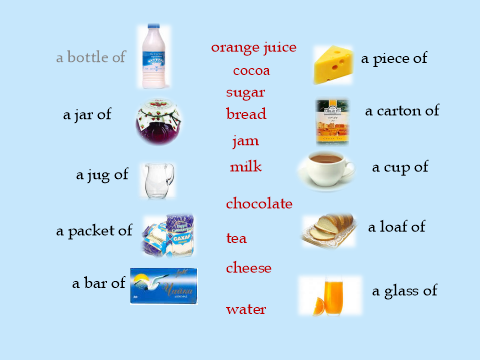
- Speaking. A) Answer the questions. (Slide 11)
B) Disscuss following group of food (Slides 13-16)
C) Find healthy food. In the following line of letters cross out the letters so that the remaining letters will spell the name of healthy food. (Slide 17)
III. Заключна частина.
- Підведення підсумків.
Let’s come back to our mind-map and sum up what we spoke about. Answer the questions:
- What do you like to eat?
- What fast and junk food do you know?
- What idioms from the lesson did you remember and like?
- Домашнє завдання. Make up advertisement of food
Тема: I cook. Actions in the kitchen
Мета: повторити лексику теми, познайомити з новими словами, практикувати учнів у монологічному й діалогічному мовленні; удосконалювати навички аудіювання; розвивати навички перекладу, закріпити на вправах граматичні структури та правила;
розвивати навички ситуативного мовлення, мовну, мовленнєву та прагматичну компетентності школярів;
виховувати культуру спілкування, прищеплювати прагнення до саморозвитку, використовувати здобуті знання як засіб інтелектуального самоствердження.
Тип уроку: комбінований
Обладнання: тематичні картки, кошик з продуктами харчування, роздатковий матеріал, друкована клавіатура, дошка, презентація, ІКТ.
Procedure
І. Beginning of the lesson
1. Greeting.
Організація класу. Привітання. Введення у іншомовну атмосферу.
Good afternoon, dear pupils. Welcome to our lesson. The weather today is very good, is not it? And what about you? What weather do you have on your hearts? I know how to make it better. We continue learning the tastiest topic - “Food”. So imagine your favourite food, how it taste, what a pleasure you have eating it… And let’s start our lesson!
I hope you will be work hardly and your marks be very good. Today we work with the electric and the computer that’s why you should be very attentive and remember about your safety.
2) Warming-up.
а) «Споживчий кошик» - Food basket. Учні називають продукти (англійською мовою), які вчитель кладе в кошик.
I have a basket. Let’s stuff it.
б) Робота з тематичними картками. Вчитель показує картки, учні читають і перекладають ( на українську мову) назви продуктів.
Look at the cards, please. Read the idioms, translate and explain them.
|
couch potato |
|
apple of one’s eye |
|
cool as cucumber |
|
to be one’s cup of tea |
|
it’s another cup of tea |
|
half-baked |
|
you are toast |
|
in a nutshell |
|
sell like hot cakes |
|
full of beans |
|
be like chalk and cheese |
|
a big fish in a small pond |
II. The main part.
Мотивація навчальної діяльності учнів.
1)Повідомлення теми та мети уроку. «Комп’ютерний вірус» - Computer virus.
«ш сщщл. кусшзу.»
I have a little problem. I wanted to print the topic of our lesson on the computer but forgot to change the alphabet from Ukrainian to English. Can you rewrite it?
Oh yes, you are right. So, my dear cooks, let’s get to know how we prepare food. Today we shall be recite words from the topic I cook and actions in the kitchen.
2)Формування навичок вживання лексики. «Великий комбінатор» - Big contriver. Закінчити речення за змістом.
Finish the sentences.
- Rabbit likes to eat …
- We eat soup with …
- Little mouse likes …
- Tiger would like to eat …
- We drink coffee with …
- Children drink tea with … and …
3) «Рекламний ролик» - Аdvertisement clip. ( checking home task)
4) Vocabulary.
Робота на дошці.
Find countable and uncountable nouns. (textbook)
5) Хвилинка відпочинку – Let’s have a rest.
Створення здоров’язбережного освітнього простору, засобами релаксаційної вправи.
I can see you are tired. Let’s have a rest.
6) Введення нових лексичних одиниць.
а) Запропонувати учням послухати нові слова та повторити за вчителем. Слова на дошці та на партах учнів. (Slides 4-6)
Bake-пекти
Boil-кип’ятити
Chop-нарізати
Cut-відрізати, розрізати
Fry-смажити
Grill-смажитти на решітці
Peel-чистити
Get-одержувати
Slice-різати
Add-додавати
б) Робота з словником. Слова синоніми.
What is the difference between “chop” and “slice”? Open your vocabulary and find the difference between the synonyms?
7) Гра «Пазл» - Рuzzle–game. Запропонувати учням поєднати слова з таблиці дієслів та з таблиці їжа на презентації.
Look at the table and do word-combinations.
1)C 2)B 3)E 4)D 5)A 6)G 7)F
8) Listening
А) Listen the dialogue and answer what likes Susan.
|
Egg rolls |
|
|
Cheese sandwiches |
|
|
Tomato salad |
|
|
Chocolate cake |
|
|
beer |
|
|
wine |
|
В). Listen, complete the text using words from the box
|
whisk |
slice |
add |
fry |
|
mix |
serve |
chop |
pour |
How to make a Spanish omelette
You need 400 g of potatoes, 1 large onion, 5 eggs, 100 ml of vegetable oil, 4 tablespoons of olive oil, salt and pepper.
- First A) _____________the potatoes and B)________ the onion.
- Heat the vegetable oil in a frying pan. Add the potatoes and onions and C) ____them for about 15 minutes. Remove the mixture from the pan.
- D) _______the eggs in a bowl with salt and pepper, E)________the potato and onion mixture and F) ______ well.
- Heat the olive oil in a smaller frying pan and G) ______in the mixture. Cook over a medium heat for about 5 minutes. Then turn the omelette and cook it on the other side as well.
- H) ________ hot or at room temperature with a green salad.(Slides 7, 8)
9) Read the recipe of Sherph’s pie.
When you want to prepare a typical British Shepherd’s Pie, you need: 500 g minced lamb, 1 onion, 100 mushrooms, 2 carrots, 30 g butter, 50 ml milk, 70 g cheese, salt and pepper.
You probably do not have all these ingredients at home. You have to go shopping and buy them. (Slide 9)
10. Writing
Analyze the recipe of vegetable salad and then write your own recipe of fruit salad.
Ingredients:
1 cucumber,
3 tomatoes,
2 carrots,
2 red peppers
Olive oil
Salt
- Slice tomatoes, dice peppers and cucumber and grate carrots. Put them all in a bowl.
- Add salt and olive oil.
- Mix them all together.
- Serve cold (Slide 11)
10 ) «Калейдоскоп» - Kaleidoscope. Скласти слова з запропонованих літер. (Slide 12)
- abek rigll
- obli lepe
hopc oastr
- tuc scile
- ryf dad
III. ЗАКЛЮЧНА ЧАСТИНА УРОКУ.
1)Підсумок уроку. Оцінювання учнів.
Our lesson is almost over. Did you enjoy it? What new things have you learned today? Self-assessment. How do you work? What mark do you put for you?
2)Домашнє завдання.
Write recipe of your favourite dish using the new words.
You work well. And your marks are…
Our lesson is over. Have a good time! See you tomorrow.
Тема: у ресторані. Манери за столом
Мета:
актуалізувати лексику за темою, практикувати учнів у вживанні тематичної лексики, формувати навички говоріння на рівні мікро висловлювання та тренувати в читанні;
розвивати комунікативні навички, мовну здогадку, уяву, пам’ять, увагу, творчість; вміння самостійно працювати; сприяти загальнокультурному розвитку учнів, умінню спілкуватися;
виховувати навички культури харчування, культури спілкування,
Тип уроку: застосування знань, навичок та вмінь.
Обладнання: підручник, зошити, словники, картки, ІКТ
Procedure
І. Beginning of the lesson
1. Greeting and aim. Привітання й повідомлення теми та мети уроку.
T: Good morning, boys and girls! How are you? I’m very glad to see you at our lesson. Today we’ll continue to work at the topic “Food and Drinks” and now we go at the restaurant and learn table manners.
2. Warming up. Уведення в іншомовну атмосферу
T: (Brainstorming) answer the questions:
Have you ever been at the restaurant?
What can we eat at the restaurant?
Is it expensive to eat at the restaurant?
What is your favorite restaurant or café? (Slide 2)
II. Checking home task
Pupils read their recipes
III. Основна частина
1. Listening and watching. Speaking. Аудіювання.
T: Watch the conversation how to order at the restaurant.
Make up similar dialogues. (video “At the restaurant”) (Slide 3,4)
2. Writing. Письмо
T: We know that some people like to eat meat, others like vegetables or dairy products. Now your task is to write down all the things you like and all the things you don’t like. Write two lists:
|
I like
|
I don’t like |
|
meat, fish, sweets, cakes, ice-cream, etc.
|
onions, lemons, mustard, beans, garlic, etc. |
T: Now change your lists with your partner and write two things your partner likes and two things your partner doesn’t like.
P1: Andrew likes meat and fish but he doesn’t like onions and garlic.
T: Now let’s have fun. Today I have a funny menu. I changed it for joke. Your task is to write the correct words. Use the words in the box.(Slide 5, 6)
|
chocolate cheese milk lemon orange juice fish large apple tomato |
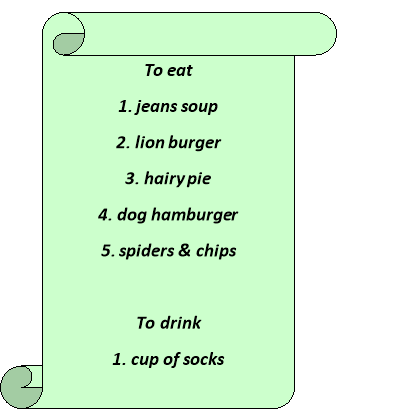
Key: To eat: tomato soup, cheeseburger, apple pie, large hamburger, fish & chips
To drink: cup of juice, orange juice, tea with lemon, coffee with milk, hot chocolate
3. Reading. Читання.
T: Look at the blackboard and read a very interesting text “The Table manners” “It’s only OK to kiss in public in the evening when it’s dark.”
“It’s impolite to put your elbows on a table at mealtimes.”
“In a restaurant, it’s rude to snap your fingers when you want a waiter or waitress”
“When someone invites you to a restaurant for a meal, it’s rude to offer to pay for your meal”
“When people invite you to their house for dinner, it’s impolite to be very late.”
“When you are at a friend’s house call without asking your friend”
“When you want to smoke in a public place or in someone’s house, it’s polite to ask for permission”.
It’s very rude to eat when you are walking down a street.
When you go to a dinner party, it’s polite to take some food, perhaps some ice cream or cake.
When you meet a person for the first time, it’s polite to kiss him/her once on the left cheek. (Slides 7, 8)
T: You have read the text about table manners. Let’s do some exercises with the help of slides and your papers.
After-reading activity
- Answer the questions
- Is it polite to put your elbow on the table, when you have meal?
- Is it OK’ to snap your fingers, when you want a waiter?
- Is it polite or impolite to come late for dinner?
- What should you do when you want to smoke in a public places?
- Is it polite to kiss a person when you meet him for the first time?
B) Complete the sentences
It’s only OK to _______ in public in the evening when it’s dark.”
“It’s ___________ to put your elbows on a table at mealtimes.”
“In a restaurant, it’s rude to ________your fingers when you want a waiter or waitress”
“When someone invites you to a restaurant for a meal, it’s rude to______ to pay for your meal”
“When people invite you to their house for dinner, it’s __________________.”
“When you are at a friend’s house _______without asking your friend”
“When you want to smoke in a public place or in someone’s house, it’s polite______________”
It’s very rude to eat when you are ________________________.
When you go to a dinner party, it’s ___________________, perhaps some ice cream or cake.
When you meet a person for the first time, it’s polite to kiss him/her ______________.
4. Grammar
Modal verb should for advice
Use should and shouldn’t to ask for and give advice. Use should to say something is a good idea, and shouldn’t to say it’s a bad idea:
Should I bow? Yes, you should.
Form:
Positive subject+ should+ infinitive
Negative subject+ shouldn’t+ infinitive
Question Should+ subject+ infinitive?
Short answers Yes+ subject+ should
No+ subject+ shouldn’t
Complete the sentences using should or shouldn’t.
- _____ I put my elbow on the table, when I have meal?
- ______ I wear a suit and tie to meet a new client in Saudi Arabia?
- When you are invited for dinner at a friend’s house in the UK, you _____ arrive more than 15 minutes late.
- When someone invites you to a restaurant for a meal, it’s rude you _____pay for your meal.
- You _____ have a meeting in room 4 because it is unlucky.
ІІІ. End of the lesson. Заключна частина уроку.
Homework. Домашнє завдання.
Summarizing. Підбиття підсумків уроку.
Today you’ve worked very hard, have been very active. During today’s lesson you have learnt a lot of interesting information and improved your speaking skills.
Saying goodbye.
T: Stand up, children! Thank you for your work. The lesson is over. Goodbye!
Тема: Їжа. Узагальнення і систематизація набутих ЗУН з теми
Мета:
активізувати вивчені лексичні одиниці з теми «їжа», удосконалювати навички говоріння з теми;
розвивати пам’ять, логічне мислення, мовленнєву реакцію, мовну здогадку та ситуативне мовлення;
формувати шанобливе ставлення до іноземної мови як засобу міжкультурного спілкування, залучати учнів до колективної співпраці.
Обладнання: підручник, комп’ютер, Power Point презентація до уроку
блюдо з паперовою «локшиною», “Happy Meal” boxes
Тип уроку:узагальнення і систематизації набутих знань, умінь і навичок
Procedure
- Beginning of the lesson.
- Організаційний момент.
Teacher: Hello, boys and girls! Nice to see you!
Sit down, please! I hope everybody is OK today.
You see, children, today at breakfast news I’ve watched a DIY programme about cooking Italian food. I adore Italian food and one of my best dishes is Italian noodles or pasta. And I’ve brought some to you. Look! How tasty it is! Yummy!!!
(Slide 1) Розшифруйте тему нашого заняття (комп’ютерний вірус)
(Slide 2) Would you like to taste the dish? Take “the noodle” and answer the question written on it. Let’s learn more about each other! (Slide 3) Discuss the proverb.
- Мовленнєва зарядка.
Учні беруть з тарілки по «локшині» – стрічки з паперу, розкручують та читають запитання, написані на них, та відповідають.
- What is your favourite fruit?
- What is your favourite vegetable?
- What do you usually eat for dinner?
- When do you usually have supper?
- Who cooks in your family?
- Do you like ice-cream?
- Do you have your breakfast at home or at school?
- Do you eat at school canteen?
- The main part. Основна частина уроку.
- Повторення лексичних одиниць з теми.
T: Name the words from the topic “Food”
Метод «Бараняча голова» (slide 4)
- Розвиток навичок говоріння. Speaking.
Discuss the questions.
(Slide 5)
|
Group 1 |
Group 2 |
|
How much food do we eat a year? |
What is junk food? |
|
What is fast food? |
Why is junk food very popular? |
|
What is fast/ junk food high and low in? |
What problems can junk food lead to? |
Group 1.
- We eat half of the ton of food each year.
- Fast food is highly processed food often made of convenience food.
- Fast food is high in fats and sugars and low in minerals and vitamins.
Group 2.
- Junk food is unhealthy food.
- Junk food is very popular because it is cheap and convenient to eat.
- Junk food can lead to dental problems, heart diseases and obesity.
- Writing. Let’s sum up what we’ve got. Complete the sentences. (Slide 6)
Fast food and junk food is…..
This kind of food is high in……. and low in ……..
It can lead to…….
Учні доповнюють речення.
- Quiz. T: Let’s do some tests. Choose the right ending of the sentence. (From textbook)
- Every year people in the world are becoming…….(Slide 7)
- happier
- fatter
- healthier
- Finger food is fast food which can be eaten …(Slide 8)
- without forks
- without sticks
- without forks and knives
- Fast food is usually served in…….(Slide 9)
- cartons, bags or plastic wrappings
- plates
- cans and cartons
- People are overweight because they eat fast food …..(Slide 10)
- at home
- in a restaurant
- in a hurry
- Eating of junk food can lead to …..(Slide 11)
- problems at work
- health problems
- dental problems
- To be healthy a person needs …..(Slide 12)
- to have a lot of money
- minerals, proteins, vitamins
- to have enough sleep
Keys: 1b, 2c, 3a, 4c, 5b, 6b
- Speaking. Перегляд та обговорення відео.
T: Pupils, tell me, please, where can we buy fast food? What is the most popular place selling it?
P: It’s McDonald’s! (Slide 13-14)
T: Yes, right you are. Have you ever been there? Let’s go on an excursion to the McDonald’s!!! Right now! Will you?
Welcome to McDonald’s, dear friends! Nice to meet you here! We’re not going to eat here, but see how they prepare the meals. What are the most popular dishes at McDonald’s? How do we call the lunch box at McDonald’s? (“Happy Meal”). (Slide 15)
What is the usual set of its dishes? What does the “Happy meal” consist of? (French fries, Coca-Cola or juice, a hamburger or cheeseburger). Right you are.
Хвилина релаксації.
T: Let’s listen to the song “I like food” (Slide 17)
You may sing to the CD- player.
- Гра « Healthy Happy Meal”
T: I’ve got two “Happy Meal” boxes for each group. The food inside these boxes is mixed. You have got only 1 minute to do the following tasks:
Group №1: Fill the lunch box only with healthy food.
Group №2: Fill the lunch box only with unhealthy food.
Учні наповнюють “Happy Meal” - коробки. (Slide 18)
По закінченню гри:
T: You time is up. Let’s see what you’ve got. Name the food you have chosen for your box.
I wish you didn’t have an unhealthy lunch box for your meals. For most people all over the world right food is the main part of their lifestyle. And that’s why we say “you are what you eat”. Do you want to be healthy? Then, eat the lunch box with healthy meal! Do you want to be unhealthy and weak? Don’t? Then, you mustn’t eat the food from the other box. If you lead a healthy diet you are healthy. If you don’t lead a healthy diet you are not very healthy.
So, eat regularly, drink lots of water, have enough sleep, keep active, have a regular rest. This will keep you fit, healthy and slim.
- Grammar revision
Countable/uncountable nouns
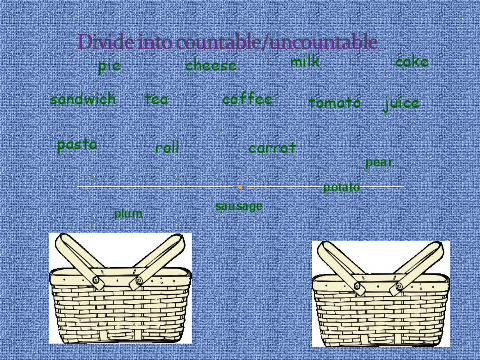
Look at these ideas and write sentences about what you should/shouldn’t do in the classroom.
|
-listen to your teacher - speak your own language - talk on your cellphone - eat food - do your homework - speak English - work hard - arrive on time - arrive late |
Example: You should listen to your reacher.
(Slide 20)
- Writing. Письмо.
a) T: Now, I think, you are ready to do exercise slide 21. Your task is to read and complete the sentences. Use the words: spicy, sweet, sour, salty, bitter.
1. If you add a  to your tea, it makes it taste ____________.
to your tea, it makes it taste ____________.
2. Jane added some  to the dish to make it ___________.
to the dish to make it ___________.
3. This  tastes too ____________. You have put too much sugar in it.
tastes too ____________. You have put too much sugar in it.
4. This  tastes too ____________. Pass me the sugar, please.
tastes too ____________. Pass me the sugar, please.
5. This  is too ___________! I can’t eat it.
is too ___________! I can’t eat it.
B) T: You have cards on your desks. You can see words there. Your task is to make up the sentences with these words.
|
|
9) Vocabulary Practice. Lexical Game. Практика у вживанні тематичної лексики. Лексична гра.
T: There are nineteen words connected with food. They go across and down. Find the hidden words in the box and write them down.
|
m |
c |
o |
r |
n |
f |
l |
a |
k |
e |
s |
p |
q |
s |
x |
|
i |
w |
v |
r |
n |
u |
y |
s |
p |
i |
c |
y |
a |
a |
d |
|
x |
e |
t |
s |
p |
a |
g |
h |
e |
t |
t |
i |
m |
l |
v |
|
e |
b |
i |
t |
t |
e |
r |
f |
g |
h |
j |
h |
o |
t |
i |
|
r |
p |
u |
d |
d |
i |
n |
g |
k |
l |
z |
x |
c |
y |
t |
|
t |
r |
v |
e |
b |
p |
a |
n |
c |
a |
k |
e |
s |
n |
a |
|
m |
e |
q |
s |
t |
o |
v |
e |
r |
w |
e |
r |
o |
t |
m |
|
y |
f |
u |
s |
w |
e |
e |
t |
i |
i |
o |
p |
u |
a |
i |
|
s |
e |
m |
e |
a |
l |
s |
d |
s |
f |
g |
h |
r |
j |
n |
|
k |
r |
l |
r |
z |
x |
c |
v |
p |
b |
o |
w |
l |
b |
s |
|
n |
m |
r |
t |
o |
a |
s |
t |
h |
g |
d |
n |
w |
q |
y |
- Writing. Write down recipe of Ukrainian dish.
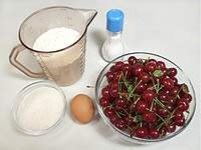
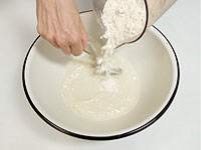
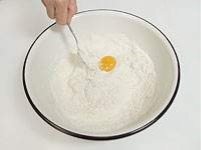
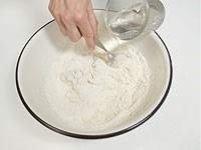
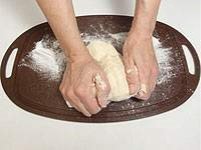
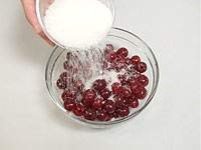
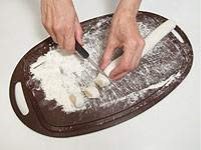
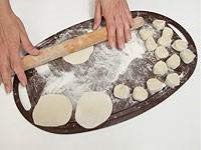
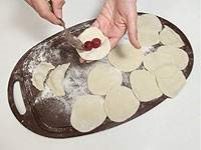
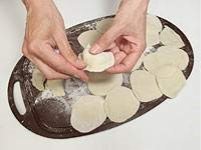
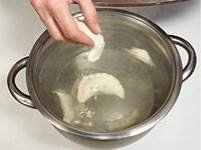
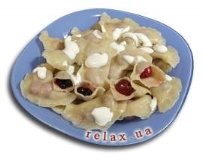
- Unscramble the words
(slide 23)
- Say, where you can buy. (Slide 24)
- Резервне завдання ( слайд 25)
- Заключна частина уроку.
- Повідомлення домашнього завдання.
T: Children, imagine that you are opening a new restaurant in our town. Make your own menu consisting only of right and healthy foods.
- Оцінювання діяльності учнів:
T: At the end of our lesson I’d like to thank you for your activity and good answers. Two groups have worked quite well. The most active pupils at our lesson today are… . Your marks are… .
- Підведення підсумків уроку.
T: Children, did you like the lesson? What did/didn’t you like most of all? Did you learn anything new?
Thanks a lot for your hospitality and good mood.
Good- bye!
Додаток 1 Handout Group №____
Task1. Find the answers to the questions.
|
Group № 1 |
|
How much food do we eat a year? |
|
What is fast food? |
|
What is fast/ junk food high and low in? |
Task 2. Choose the right ending of the sentence.
- Every year people in the world are becoming…….
- happier
- fatter
- healthier
- Finger food is fast food which can be eaten …
- without forks
- without sticks
- without forks and knives
- Fast food is usually served in…….
- cartons, bags or plastic wrappings
- plates
- cans and cartons
- People are overweight because they eat fast food …..
- at home
- in a restaurant
- in a hurry
- Eating of junk food can lead to …..
- problems at work
- health problems
- dental problems
- To be healthy a person needs …..
- to have a lot of money
- minerals, proteins, vitamins
- to have enough sleep
Додаток 2 Handout Group №___
Task1. Find the answers to the questions.
|
Group № 2 |
|
What is junk food? |
|
Why is junk food very popular? |
|
What problems can junk food lead to? |
Task 2. Choose the right ending of the sentence.
- Every year people in the world are becoming…….
- happier
- fatter
- healthier
- Finger food is fast food which can be eaten …
- without forks
- without sticks
- without forks and knives
- Fast food is usually served in…….
- cartons, bags or plastic wrappings
- plates
- cans and cartons
- People are overweight because they eat fast food …..
- at home
- in a restaurant
- in a hurry
- Eating of junk food can lead to …..
- problems at work
- health problems
- dental problems
- To be healthy a person needs …..
- to have a lot of money
- minerals, proteins, vitamins
- to have enough sleep


про публікацію авторської розробки
Додати розробку
